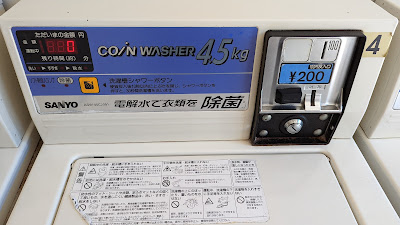How to use coin laundry in Japan?

There are roughly three standard coin-operated washing machines in Japan. Coin Washer (4.5kg) One is like this: Coin Washer (4.5kg) This is the most basic and typical washing machine in a small coin laundry. Things you need to pay attention to: You shouldn't put your clothes into the washer directly. First, you need to press the shower button(シャワーボタン) just right after the coin is inserted. ( This action is to make the washing machine self-cleaning. ) After the washing machine finishes self-cleaning, you need to open the lid and put the clothes and detergent into the washer. Then put down the lid of the washer, just ok. You must wait until the countdown is over before taking out the laundry. Detailed instructions In fact, there are detailed instructions on the back of its lid. It says: You must first confirm whether other people's clothes are in the laundry bucket. You can only put 100 yen coins. And 4, that's what I said before. When 「ソフト剤投入ランプ」(Soft agent lamp) flashes
